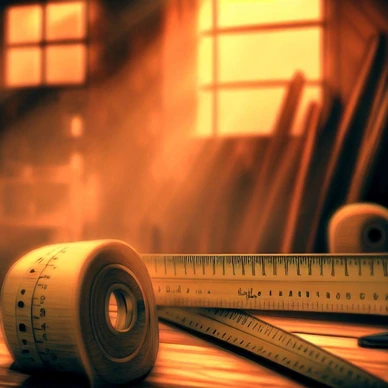Question 1:
What is dimensional measurement?
A) The process of quantifying the size and shape of objects
B) The process of quantifying the color and texture of objects
C) The process of quantifying the weight and volume of objects
D) The process of quantifying the temperature and pressure of objects
E) None of the above
Correct answer: A
Question 2:
How many dimensions are present in a two-dimensional figure?
A) Zero
B) One
C) Two
D) Three
E) None of the above
Correct answer: C
Question 3:
Which unit of measurement is commonly used for length in the metric system?
A) Meter
B) Centimeter
C) Kilometer
D) Foot
E) Inch
Correct answer: A
Question 4:
What is the difference between accuracy and precision in dimensional measurement?
A) Accuracy refers to how close a measurement is to the true value, while precision refers to how close measurements of the same item are to each other
B) Accuracy refers to how close measurements of the same item are to each other, while precision refers to how close a measurement is to the true value
C) Accuracy and precision are the same thing and can be used interchangeably
D) Accuracy and precision are not important concepts in dimensional measurement
E) None of the above
Correct answer: A
Question 5:
What is the purpose of a micrometer?
A) To measure the size of cylindrical and spherical shaped objects with high accuracy
B) To measure the weight and volume of objects
C) To measure the color and texture of objects
D) To measure the temperature and pressure of objects
E) None of the above
Correct answer: A
Question 6:
What are some differences between vernier calipers and dial calipers?
A) Vernier calipers use a Vernier scale to measure the final fraction of a millimeter or an inch, while dial calipers use a miniature, precise rack and pinion that drives a pointer on a circular dial
B) Vernier calipers can display values in both mm and inch, while dial calipers are generally easier to read
C) Vernier calipers are more accurate than dial calipers, while dial calipers have fewer moving parts and are less likely to go out of calibration or malfunction
D) Vernier calipers require no batteries to function, while dial calipers require batteries
E) None of the above
Correct answer: A
Question 7:
What is the formula for calculating the volume of a sphere?
A) Volume = side length^3
B) Volume = length x width x height
C) Volume = � x radius^2 x height
D) Volume = (4/3) x � x radius^3
E) Volume = (1/3) x � x radius^2 x height
Correct answer: D
Question 8:
What is the purpose of a Coordinate Measuring Machine (CMM)?
A) To measure the dimensions of manufactured components
B) To measure the color and texture of objects
C) To measure the weight and volume of objects
D) To measure the temperature and pressure of objects
E) None of the above
Correct answer: A
Question 9:
What are some differences between contact and non-contact measurement?
A) Contact measurement devices must touch and then traverse the object, while non-contact measurement devices measure with absolutely no contact or direct touch probing whatsoever
B) Contact measurement devices can cause deformation of the object being measured, while non-contact measurement devices can measure more points at one time and without putting pressure on the object
C) Contact measurement devices are generally slower than non-contact measurement devices, while non-contact measurement devices are faster, especially for applications with high sampling rates
D) Contact measurement devices include coordinate measuring machines (CMMs) and pin gages, while non-contact measurement devices include vision systems, CT scanners, laser scanners, photogrammetry, and structured light scanners
E) All of the above
Correct answer: E
Question 10:
Why is calibration important in dimensional measurement?
A) To ensure accuracy and consistency in manufactured products
B) To identify errors in the measurement process
C) To improve quality control and meet industry standards
D) All of the above
E) None of the above
Correct answer: D
Share on…



